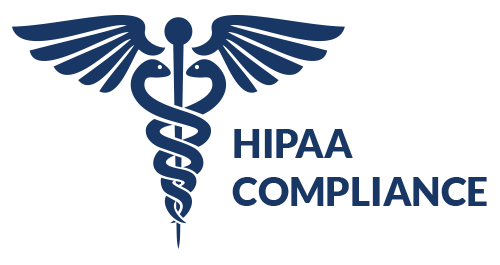During the pandemic of COVID-19, only people were not in danger of spreading the virus, but
also healthcare staff and doctors. They were much more in danger than people. They treated
these patients for 24 hours. So, the danger was more than people. During the pandemic, many
doctors and medical staff died as well while treating the patients affected by the deadly virus. It
was a tense situation for doctors and patients. Implementing policies to safeguard their
personnel and patients from potential viral exposure has proven difficult for healthcare
professionals. They faced a number of challenges, one of which was how to conduct routine
consultations and examinations. In such a situation, only one thing was a solution which was
Telehealth. Telehealth was the only solution that controls the virus from spreading, and patients
also got their treatment regularly at a distance.
In this blog, we will talk about Telehealth and the necessity of HIPAA and Telehealth. First,
know what Telehealth is.
What is Telehealth?
Telehealth is a process of providing the service of healthcare, health-related information, and
knowledge by using telecommunications such as mobile, laptop, personal computer, tab, etc. at
a distance. Under this practice, you don’t need to meet service providers physically. You can
take these services from your home, office, or another place where you feel comfortable.
Telehealth is more inexpensive, simple, and comfortable than traditional practice.
Healthcare practices through Telehealth by doctors are not a new concept. It has been
practiced for many years. But, the user growth of Telehealth has increased rapidly after the
pandemic. According to a report, between March and April 2020, telehealth service usage
increased by more than 11,718% among patients.
Healthcare professionals scrambled to identify workable telemedicine alternatives as the virus
spread so they could keep giving their patients the treatment they needed.
The electronically protected health information (ePHI) of patients could potentially be in danger
because the majority of these alternatives did not adhere to the Health Insurance Portability and
Accountability Act of 1996 (HIPAA).
Security and Privacy Concerns in Telehealth
Every healthcare provider must adhere to the rules set forth by HIPAA for the protection of
ePHI. In general, HIPAA requirements are met when ePHI is transmitted directly between a
patient and a doctor. Cybercriminals can access a patient’s data by taking advantage of flaws in
unprotected platforms that are used to convey personal patient information. For instance,
patients are more susceptible to phishing schemes when they communicate with a health
professional over an unprotected channel, such as SMS.
Although the HIPAA regulations are straightforward, the Office for Civil Rights (OCR) March
2020 Notification of Enforcement Discretion for Telehealth Remote Communications makes
things more difficult. This notice states that the OCR will not apply penalties for organizations
that would transgress HIPAA’s privacy & security and breach reporting standards if a healthcare
provider is providing telehealth services in good faith. Let’s clarify the fundamental terms first to
better appreciate how the OCR notice and HIPAA conflict but also overlap.
The fundamental terms are-
HIPAA Privacy Rule
A set of cybersecurity requirements known as the HIPAA Privacy Rule is in place for healthcare
organizations, insurance companies, and intermediaries that send patient data electronically. In
accordance with this regulation, covered entities must put in place suitable safeguards and
regulate the utilization and sharing of ePHI. Additionally, under this regulation, patients have
rights to their ePHI, including the ability to see and obtain copies of their information as well as
the right to make changes.
HIPAA Security Rule
The HIPAA Security Rule is a federal cybersecurity regulation meant to safeguard ePHI that
healthcare companies make, transmit, utilize, maintain, and manage. To protect the security
and integrity of ePHI, technical, physical, and administrative precautions must be put in place.
HIPAA Breach Notification Rule
Healthcare providers and business partners are required by the Breach Notification Rule to
inform patients after an unprotected ePHI breach.
When determining whether a healthcare provider is using Telehealth for a proper purpose, the
OCR will consider all relevant facts and circumstances in accordance with the Notification of
Enforcement Discretion for Telehealth Remote Communications. The OCR has also provided
certain circumstances in which a healthcare practitioner behaves dishonestly, such as:
● Intentional privacy infringement or criminal activity
unauthorized marketing through ePHI
● Unlawful sale of ePHI
● Utilization of sites with a public audience such as Tiktok, Instagram, and Facebook Live.
● Violations of state license laws and professional ethics
What are HIPAA-Compliant Telehealth platforms?
To preserve the security of ePHI and uphold patient confidence, the OCR advises covered
institutions to only use communication software offered by suppliers acquainted with the
Security Rule. Additionally, these vendors will sign a HIPAA business associate agreement
(BAA)* to guarantee the security of ePHI.
Platforms for communication that comply with HIPAA are-
● Zoom for Healthcare
● Skype for Business
● Google Workspace/Meet
● Microsoft Teams
● GoToMeeting
● Cisco Webex Meetings / Webex Teams
● Updox
● Spruce Health Care Messenger
● Doxy. me
● Amazon Chime
● VSee
While these systems employ end-to-end encryption to guarantee that only the patient and the
healthcare professional engaging in their case can view the information being communicated,
covered organizations should make patients aware of the privacy risks associated with utilizing
these programs.
Let’s see some reasons why HIPAA is necessary to comply with Telehealth.
Why HIPAA compliance is necessary for Telehealth
There are many reasons behind it. But, we will see some of them. The followings are some
reasons that prove why HIPAA Compliance is Necessary for Telehealth:
- Using an unprotected, unencrypted platform raises the risk that protected health information
can be disclosed. - A secure Telehealth not only secure privacy but also help in reducing the spread of COVID- 19 for both doctor and patient.
- Telehealth can be conducted on a variety of platforms. Not all of them, meanwhile, were created expressly for the healthcare industry. These remedies are effective for sporadic problems, such as using a video conferencing system for a typical patient appointment.
- According to a recent study, many doctors are still worried about the standard of care they can deliver via telehealth. Clinicians’ reluctance to employ telehealth has been attributed in large part to concerns about safety, confidentiality, and compensation. In addition to helping to allay these worries, a strong, HIPAA-compliant telehealth solution can also help your practice reach a wider audience.
Conclusion
In this blog, we have discussed why HIPAA compliance is necessary for Telehealth. We have
also mentioned some rules and regulations of HIPAA and HIPAA-compliant Telehealth
platforms. We hope that the blog will be useful for you.

































